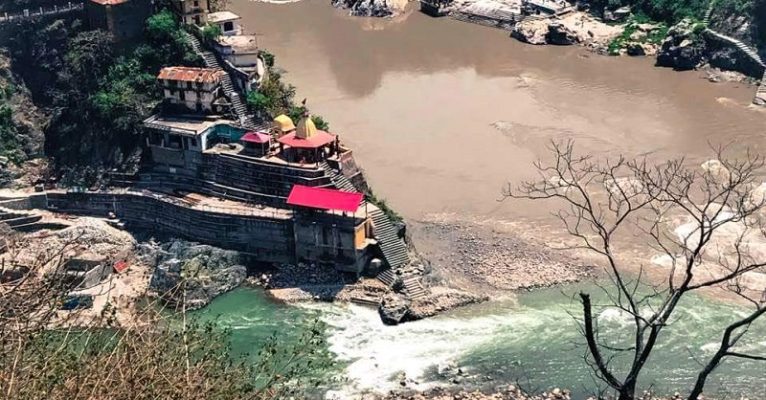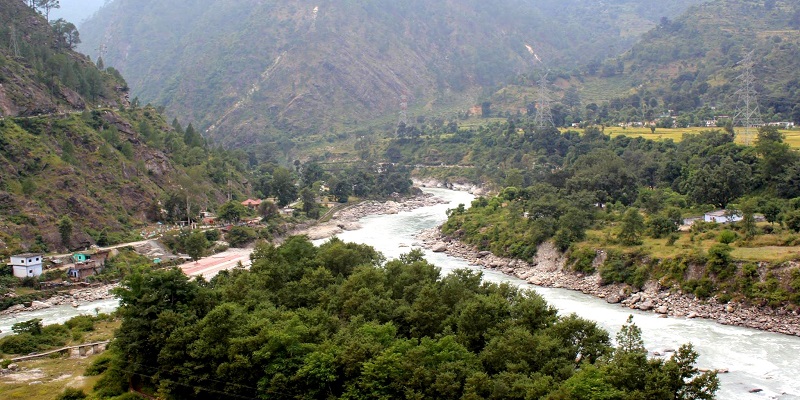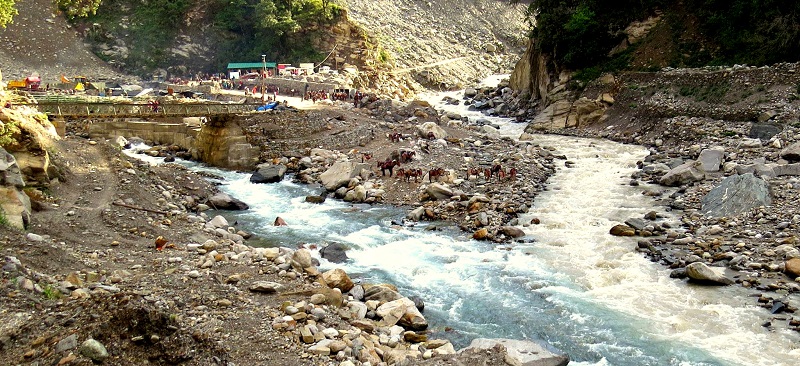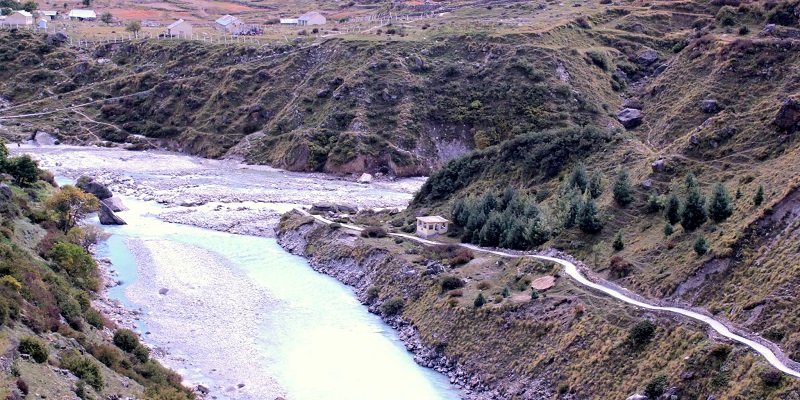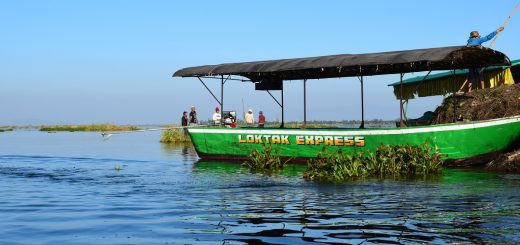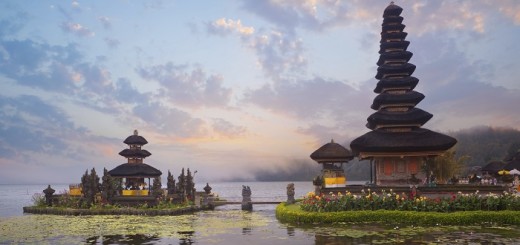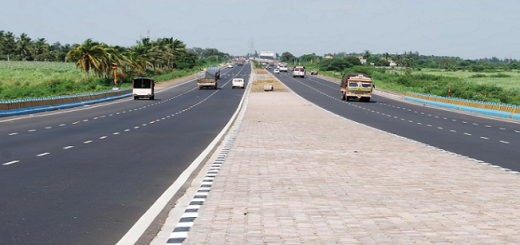Panch Prayag : Five Sacred Confluences of Alaknanda River
Panch Prayag or the Fiver Confluences are five sacred confluence of River Alaknanda before joining the Bhagirathi River and forming the Holy Ganges River of India. India is one of the largest countries in the world and has one of the biggest river systems in the world. Throughout India, many rivers join and form a larger river but the confluence of River Alaknanda is considered sacred in Hinduism. The Panch Prayag or the Five Confluences are Devprayag, Rudraprayag, Karnaprayag, Nandprayag, and Vishnuprayag. At each Prayag rivers join the mainstream of Alaknanda River and at the end, Alaknanda and Bhagirathi River form Ganges River. Panch Prayag is important not only because they are mentioned in the various sacred Hindu Books, but they are also important because they provided necessary accommodation to pilgrims while visiting the holy shrines of Badrinath and Kedarnath.
By the middle of the 19th century, pilgrims visiting the shrines of Kedarnath and Badrinath used to travel by walking along the bank of River Alaknanda. At that time, the Panch Prayag was the place were pilgrims used to stop their journey, take some rest, pray to the temples situated at the junction of two rivers and then resume their journey. Nowadays most of the people visit the shrines of Badrinath and Kedarnath via their own vehicle and therefore these sacred confluences have somewhat lost their importance. But if you really want to enjoy your trip and gain some knowledge about Hinduism, one must visit each Prayag and know the story of the origin of each Prayag. In this article, I would be describing the five sacred confluences or Panch Prayag of Hinduism, the rivers joining at these confluences, the mythological story associated with each Prayag. We will also cover some more Prayag (confluences) in India which are not as famous as the above five but they too hold importance in India.
Also Read: List of Rivers of India
Qucik Navigate:
Panch Prayag of Hinduism and River Joining at these Prayag
Also Read: Motorcycle Trip to Badrinath Temple
Last year in June I was traveling to the Badrinath Temple and got a chance to visit all the five Prayag. Even I stayed at a hotel situated at Karnapraya and resumed my drive the next day. All the five Prayag are located on en-route to Badrinath Temple with Devprayag being the most important one (River Ganges starts from Devprayag). All the five Prayag are surrounded by mountains and a temple is built at the point where two rivers meet. Supported by Hindu Mythology they present a scenic beauty and provide a point for travelers and visitors to refresh themselves.
Devprayag (Confluence of Bhagirathi and Alaknanda River & origin of Ganges River)
Devprayag is situated nearly 70KM from the city of Rishikesh at an elevation of 2720 feet. It is from Devprayag, the Ganges River officially starts. Devprayag is mentioned in Puranas (Sacred Books of Hinduism) and the temple situated here is nearly 2000 years old. The temple is known as Raghunathji Temple and according to the local priest of the temple, Lord Ram spent his last days here at Devprayag. At Devprayag the muddy water of Alaknanda River and clean and greenish color of Bhagirathi can be easily noticed.
Rudraprayag (Confluence of Mandakini River and Alaknanda River)
Rudraprayag is second Prayag en-route to Badrinath Temple and situated nearly 70 KM upstream of Alaknanda River at an elevation of 2936 feet. From Rudraprayag, one road leads to Badrinath Temple (157Km) and another road towards Kedarnath Temple (80KM). The highest Shiva Temple i.e. Tunganath Temple is also situated en-route to Kedarnath Temple from Rudraprayag. At Rudraprayag River Mandakini (coming from Kedarnath Temple) joins River Alaknanda (coming from Badrinath Temple). Rudraprayag is mentioned in Hindu Puranas and it is the place where modern Indian Music originated. According to Hindu Mythology Load Shiva in his “Rudra” form created the musical notes here and therefore the name Rudraprayag. At Rudraprayag, Jim Corbett killed the famous “man-eating Leopard of Rudraprayag” which killed nearly 125 people and terrorized the pilgrims visiting the holy Hindu shrines of Kedarnath and Badrinath. At the confluence of the river stands the Rudranath Temple which is nearly 2000 years old. Small temples of Lord Ganesh and Bhairav are also there within the main temple complex. A rock called Narad Shila used to be there at the confluence where Sage Narad meditated. Rudranath temple is unique because the temple has two idols of Lord Shiva called ‘Naradeswar’ & ‘Kameswar’. Similarly, there are two statues of Goddess Parvati and Lord Ganesh. Even there are two statues of Nandi Bull which is an important symbol in Hinduism and associated with Lord Shiva.
Karnaprayag (Confluence of Alaknanda River and Pindar River)
Also Read: Interesting Facts About Hinduism
Karnaprayag is nearly 35 Km from Rudraprayag at an elevation of 4760 feet. Pindar River, also known as Karnaganga, originating from Pindari Glacier joins Alaknanda River here. When I was traveling to Badrinath Temple, I booked my hotel at Karnaprayag and I witnessed the spectacular view of the meeting of Pindar and Alaknanda River both in the night as well as in the morning. According to Hindu Mythology, Karna (A Hero from Hindu Epic Mahabharata) meditated here. Karna wanted to meditate at the confluence of River so he forced Pindar River to meet Alaknanda River and therefore this place got its name as Karnaprayag. A temple dedicated to Karna is built here and it is believed that the last rites of Karna were performed here. The Stone on which Karna meditated is also present here and known as “Karnasila”. Although the temple is named after Karna, the main deity of the temple is Goddess Uma (Daughter of Himalayas). Karnaprayag also serves as a junction for “Garhwal” and “Kumaon” region of Uttrakhand.
Nandaprayag (Confluence of Alaknanda River and Nandakini River)
Nandaprayag is situated nearly 25 KM from Karnaprayag at an elevation of 4455 feet. At Nandaprayag River Nandakani (originating from the base of Trishul Peak) joins the muddy Alaknanda River. Nandaprayag is the only Prayag that lacks a temple at the confluence of two rivers and therefore a park is constructed by the forest department. Like other Prayag, Nandaprayag is also mentioned in Puranas. The story of Nandaprayag is as follows “Once Lord Shiva and Goddess Parvati were returning to Kailash Mountain and Goddess Parvati became thirsty. Lord Shiva struck his trident on the base of Mountain Trishul and River Nandakani emerged from there to quench the thirst of Goddess Parvati”.
Vishnuprayag (Confluence of Alaknanda River and Dhauli Ganga River)
Vishnuprayag is the last Prayag en route to Badrinath temple and it is situated at 70 Km from Nandaprayag. Situated at an elevation of 4500 feet the holy shrine of Badrinath is only 35 Km from Vishnuprayag. Joshimath town is only 10km from Vishnuprayag and all the travelers stay at Joshimath as Vishnuprayag lacks places to stay. Vishnuprayag lies at the confluence of Alaknanda River and Dhauliganga River and an octagonal temple lies at the junction. Locals say that the temple at the confluence was built by the Great Queen of Indore i.e. Ahilyabai Holkar. An idol of Lord Vishnu is situated in the temple and a staircase leads to the confluence of rivers from the temple. Vishnuprayag is least crowded among all the Prayag as pilgrims don’t spend much time here and proceed towards Badrinath Temple.
Other Sacred Confluences or Prayag in India
Apart from above mentioned five sacred Panch Prayag, there are many more Prayag in India. They hold the same importance as the above five but are not listed under “Panch Prayag”. These confluences are as follow:
Prayagraj or the City of Allahabad
The City of Allahabad is also known as Prayagraj (King of All Prayag) and it holds immense importance in Hinduism. The Prayag at Allahabad is also known as Triveni Sangam (Confluence of Three Rivers). According to Hindu Mythology, at Prayag three rivers meet i.e. The Holy Ganges River, Yamuna River, and Saraswati River (invisible). The City of Allahabad is also one of the four places in India where Kumbh Mela takes place.
Sonprayag (Confluence of Mandakini River and Vasuki Ganga River)
At Sonprayag, the confluence of Vasukiganga River and Mandakini River takes place. Sonprayag is situated near to the Temple of Kedarnath at an elevation of 6000 feet. From Sonprayag, the trek to Kedarnath Temple begins and this place acts as a point where pilgrims leave their vehicles and start trekking to Kedarnath Temple. The famous temple of Triyuginarayan is situated 12Km from Sonprayag and it is believed that from the temple premises Lord Vishnu watched the Marriage Ceremony of Lord Shiva and Goddess Parvati.
Keshav Prayag (Confluence of River Alaknanda and River Saraswati)
Keshav Prayag is the confluence of the Alaknanda River and Saraswati River. Keshav Prayag lies en route to Satopanth Glacier near village Mana and it is visible from there. The famous Bhim Pul build by Bhim (a character from Epic Mahabharat) lies on the Saraswati River. It is believed that at Keshav Prayag, River Saraswati goes underground and meets River Ganges and River Yamuna at Allahabad.
Kedar Prayag (Confluence of Bhagirathi River and Kedar Ganga Ganga)
Kedar Prayag is the confluence of the Bhagirathi River and the Kedar Ganga River. Kedarprayag lies en route to Gangotri-Gaumukh trekking. Kedar Ganga River originates from the Kedartaal and considered as the contribution of Lord Shiva to Bhagirathi River. Kedartaal is fed from the melting of snow form peaks like Thalay Sagar, Meru, Bhrigupanth, and Mt. Shivling from there the rivers flow downstream and joins Bhagirathi River near Bhagirathi falls. The water of Kedar Ganga River prior to the confluence is considered extremely holy and it is used for worship of Lord Shiva.

